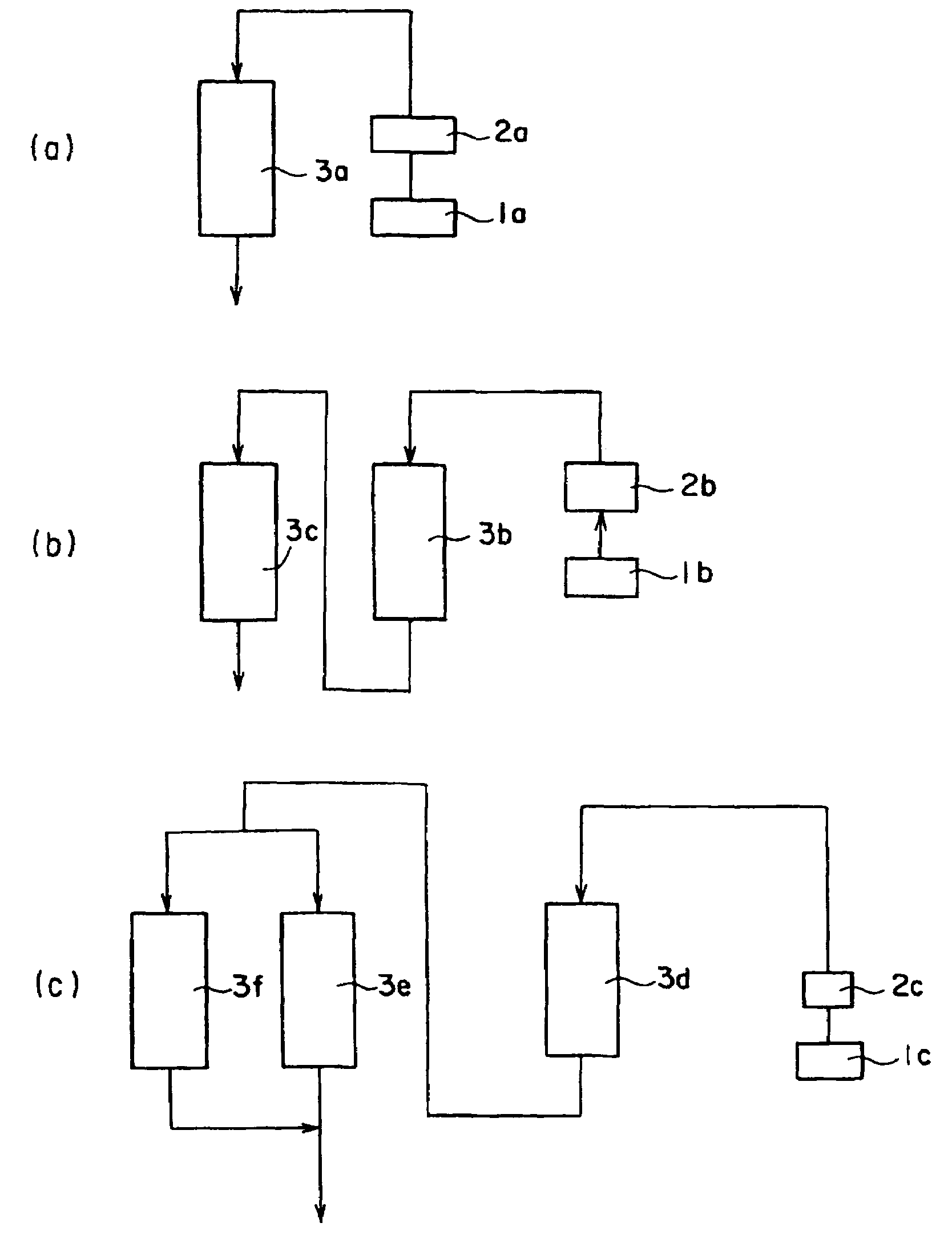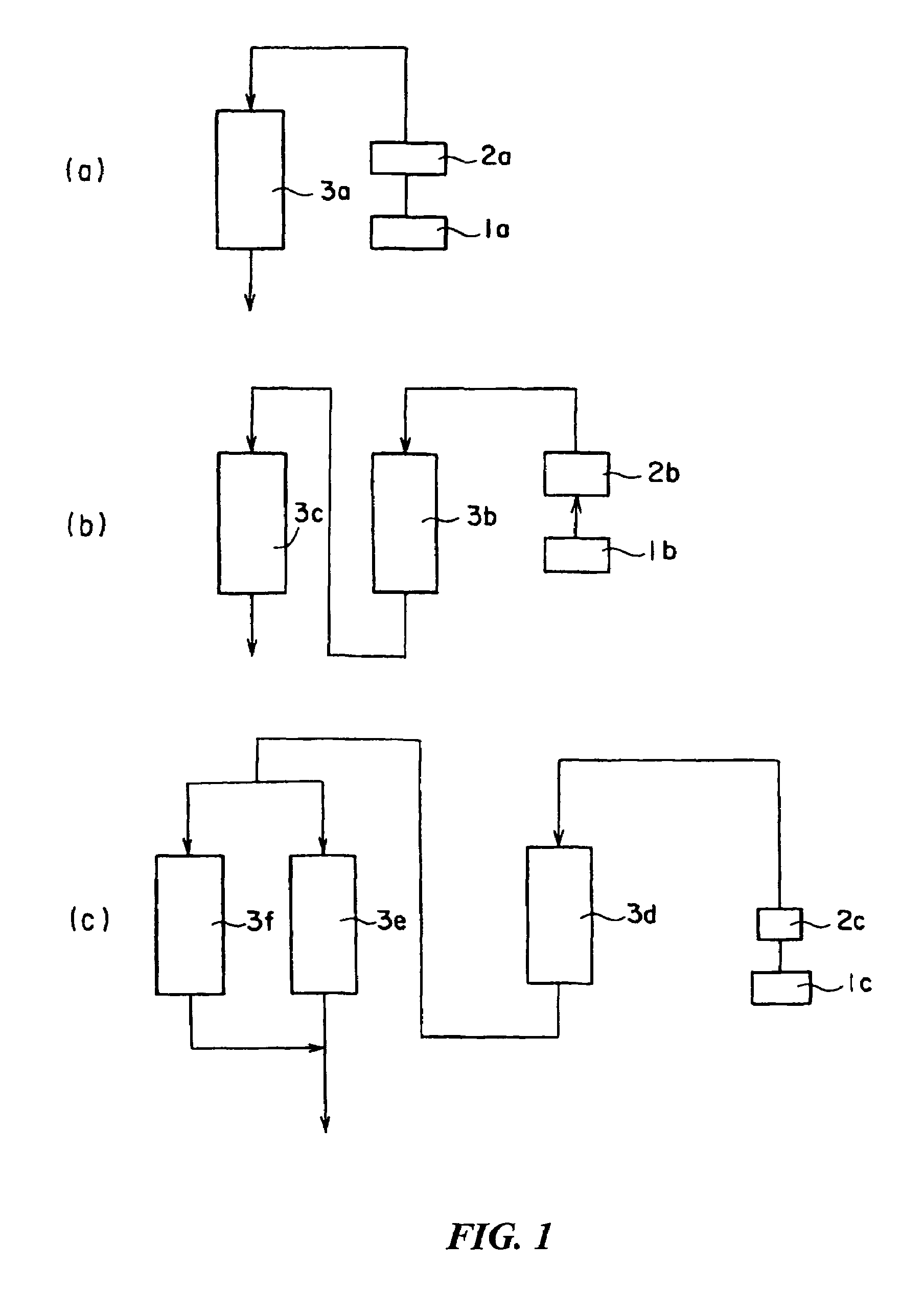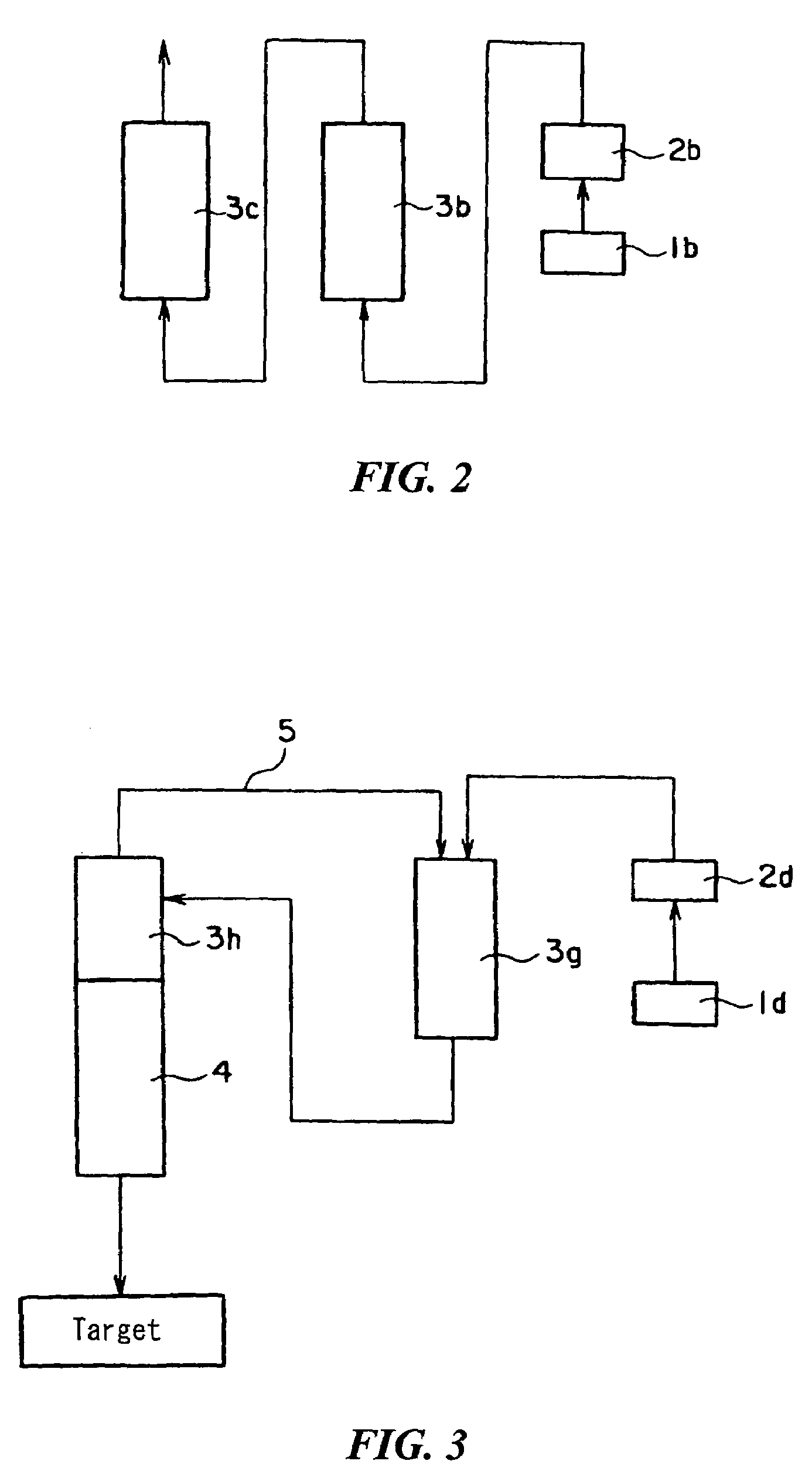Solvents containing cycloakyl alkyl ethers and process for production of the ethers
a technology of cycloakyl alkyl ether and solvent, which is applied in the direction of organic grignard reactions, hydrocarbons, record information storage, etc., can solve the problems of difficult removal of thf from the reaction mixture, difficulty in requiring a high cost, and insufficient detergency of cleaning solvents, etc., to achieve moderate boiling point, rapid decomposition, and safe handling
- Summary
- Abstract
- Description
- Claims
- Application Information
AI Technical Summary
Benefits of technology
Problems solved by technology
Method used
Image
Examples
preparation example 1
Preparation of Cyclopentyl Methyl Ether
[0179]A 1 little four-necked flask was charged with 283 parts of N,N-dimethylformamide. After replacing the internal atmosphere with nitrogen, 58.0 parts of 60 wt % oily sodium hydride was added. Then, 103.3 parts of cyclopentanol was added dropwise at a temperature between room temperature and 50° C. The mixture was heated to 110° C. in one hour and refluxed at 110-120° C. for one hour. After cooling the mixture to 50° C., 341.0 parts of methyl iodide was added dropwise. After the addition, the mixture was refluxed at 110-120° C. for five hours.
[0180]After evaporating low boiling point components from the reaction mixture, 100 parts of water was added to partition the mixture into two layers. The organic layer was dried over anhydrous magnesium sulfate and filtered to obtain about 210 parts of a filtrate. The filtrate was rectified using a Vigreux rectification column under atmospheric pressure. 77.1 parts of fraction 1 (Fr. 1) with a distilla...
example 1
Oil and Fat Solubility Test
[0182]Solubility of oils and fats (oil, rosin, wax, and fatty acids) shown in Table 2 in CPME obtained in Preparation Example 1 as a cleaning solvent was examined. 1 g (in the case of oil) or 0.5 g (in the case of rosin, wax, and fatty acid) of the sample was added dropwise to a test tube containing 5 ml of CPME to observe the solubility by the naked eye. The results of observation are summarized in Table 2.
[0183]
TABLE 2Oils and fatsExample 1Press oil No. 660Rapidly dissolved(Nihon Kohsakuyu Co., Ltd.)Cutting oilRapidly dissolved(Magplus LA-15, IdemitsuKosan Co. Ltd.)RosinRapidly dissolvedSkywax 415Dissolved in 20 minutes at 50° C.Stearic acidGradually dissolved at room temperatureLauric acidRapidly dissolvedDocosanic acidDissolved in 20 minutes at 50° C.
COMPARATIVE EXAMPLES 1 And 2 Oil and Fat Solubility Test
[0184]1 g (in the case of oil) or 0.5 g (in the case of rosin, wax, and fatty acid) of the sample was added dropwise to a test tube containing 5 ml o...
example 2
Preparation of α, α-dimethylbenzyl Alcohol Using CPME as a Reaction Solvent
[0187]45 ml (0.045 mol) of a 1 M phenylmagnesium bromide (PhMgBr) solution in THF was added to a flask, of which the atmosphere had been replaced with nitrogen, and stirred at 0° C. for 30 minutes. A solution of 1.74 g (0.03 mol) of acetone in 50 ml of CPME was slowly added dropwise to the PhMgBr solution at 0° C. After stirring at 0° C. for one hour, the reacted mixture was heated to 50° C. and stirred for a further one hour. The reaction mixture was allowed to cool to room temperature and 20 ml of 1 N hydrochloric acid aqueous solution was added to terminate the reaction. The reaction mixture was analyzed by gas chromatography to confirm that the target α,α-dimethylbenzyl alcohol was obtained in a yield of 70%.
PUM
| Property | Measurement | Unit |
|---|---|---|
| wt % | aaaaa | aaaaa |
| inner diameter | aaaaa | aaaaa |
| inner diameter | aaaaa | aaaaa |
Abstract
Description
Claims
Application Information
 Login to View More
Login to View More - R&D
- Intellectual Property
- Life Sciences
- Materials
- Tech Scout
- Unparalleled Data Quality
- Higher Quality Content
- 60% Fewer Hallucinations
Browse by: Latest US Patents, China's latest patents, Technical Efficacy Thesaurus, Application Domain, Technology Topic, Popular Technical Reports.
© 2025 PatSnap. All rights reserved.Legal|Privacy policy|Modern Slavery Act Transparency Statement|Sitemap|About US| Contact US: help@patsnap.com



